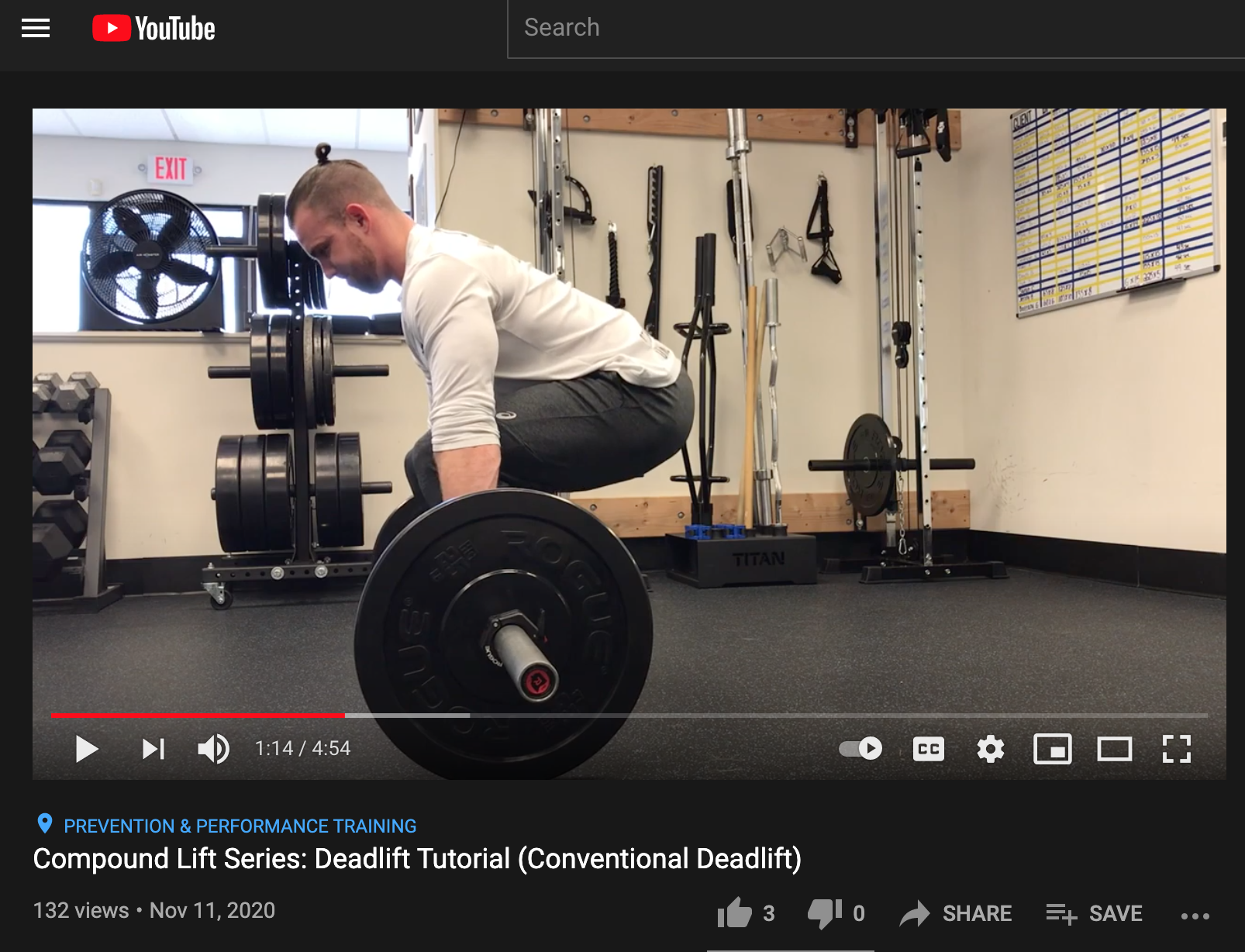Compound Lift Series: How to Effectively Perform a Conventional Barbell Deadlift
The conventional barbell deadlift is a full body exercise, and it is a powerful move to improve the strength of your core as well as the muscles in your legs and lower back. This exercise, along with the bench press and squat, is also considered one of the three core powerlifting exercises. When performed regularly and correctly, the conventional barbell deadlift will improve your posture and even accelerate your weight loss efforts. Since deadlifting involves many muscle groups, this exercise has greater potential for burning more calories during the muscle recovering process.
The staff at Prevention+Performance Training Studio enjoy teaching new techniques and moves, such as the conventional barbell deadlift, in a way that prevents injury and promotes muscle growth. We are a private studio near you in Holtsville, New York that offers a variety of body conditioning, injury prevention, and rehabilitation services. We are passionate about total body well-being and fitness. As such, we are committed to helping you work out efficiently, effectively, and safely, so you may continue to see positive results in your body.
The conventional barbell deadlift, if performed incorrectly, does have the potential to cause injuries. The correct moves are not hard to learn, though! To perfect your form and to learn more about the conventional barbell deadlift, check out these five essential tips:
#1. Ensure You Start With the Correct Form
It is essential that you maintain a flat back during your regular conventional deadlift exercise routine. This will help you engage the right muscle groups and prevent injuries. There may be times you allow your back to become more rounded, such as when you are hitting personal records. However, this should not be the norm and you should always strive to keep a straight back.
Stand with your legs around shoulder-width apart, and bend straight forward towards the bar. There is also another stance called “sumo stance,” where you can stand with your legs wider, and that is a stance we can discuss further at another time. As you prepare to lift, keep your arms sturdy and straight and avoid bending at the elbows. Maintaining straight arms will help you keep a strong grip on the bar.
#2. Be Conscious of Your Motions
Even when you feel as though you have mastered the form, be conscious of your motions each time you perform the conventional barbell deadlift. This will help you keep yourself in check and prevent bad habits when lifting. Now that you have your legs about shoulder length apart and your arms are straight, it is time to lift the bar.
To perform the conventional barbell deadlift, lower your hips right before you lift the weight of the bar off of the ground. Right before you stand, imagine you are on a fence and teetering slightly backwards. This will help you gain momentum to lift the barbell. Then, imagine you are driving the ground away from your feet and push upwards to lift the barbell.
#3. Engage All Possible Muscle Groups
As mentioned, the conventional barbell deadlift is a great exercise for engaging many different muscle groups at once! This makes the deadlift one of the most efficient exercises for building muscle, but it also means there are a few steps to consider when performing the move. When lifting up the bar, imagine you are bending the bar away from you and this will engage your latissimus dorsi muscles or your “lats”. It is also best practice to keep your shoulders down, essentially you do not want your shoulders near your ears. You can do this by imagining that you are hiding your armpits with your arms and squeezing your back muscles.
#4. The Alternating or “Mixed” Grip is Acceptable
If you are lifting challenging weight or you have added additional weight to the bar, you can use an alternating grip on the bar to better lock in your hold. You can do this by holding one hand over the bar and the other hand under the bar. This form is not a requirement, but it is an option if you feel you need a tighter grip. This hold will also take pressure off your hands if you find that the weight on your bar is painful for your palms or fingers.
#5. Start With Low Weight and Take It Slow
The deadlift is a complicated move, and it is easy to fall out of proper form. Since the conventional barbell deadlift involves heavy weight being used against your muscle, it is important that you do not develop bad habits or forms when performing this exercise. You can start by practicing with a wooden stick or even the 45-pound bar just to make sure you have the form down. From there, you can progress with more weight.
It’s even a good idea to ask a trainer, as an unbiased and helpful professional, to check out your form and give you pointers! If you are in the Holtsville, New York area, the trainers and staff at the Prevention+Performance Training Studio are here to offer you weight training tips near you. We are dedicated to offering personal training and group fitness classes that are focused on muscle gains without the worry of injury. In addition, we offer rehabilitation services to help you overcome injuries and get back to functioning at your highest ability.
For a visual lesson on how to perform the conventional barbell deadlift, you can check out Coach Rob’s Instructional Video. Here, he demonstrates each step in performing the perfect deadlift. In addition, he offers tips and tricks in starting out and preventing injuries. If you have any questions about the conventional barbell deadlift, please do not hesitate to leave a comment here or on the video. Contact Us here for more information about this exercise or the services offered at Prevention+Performance Training Studio. We are also happy to take your call at 631-871-4489.

